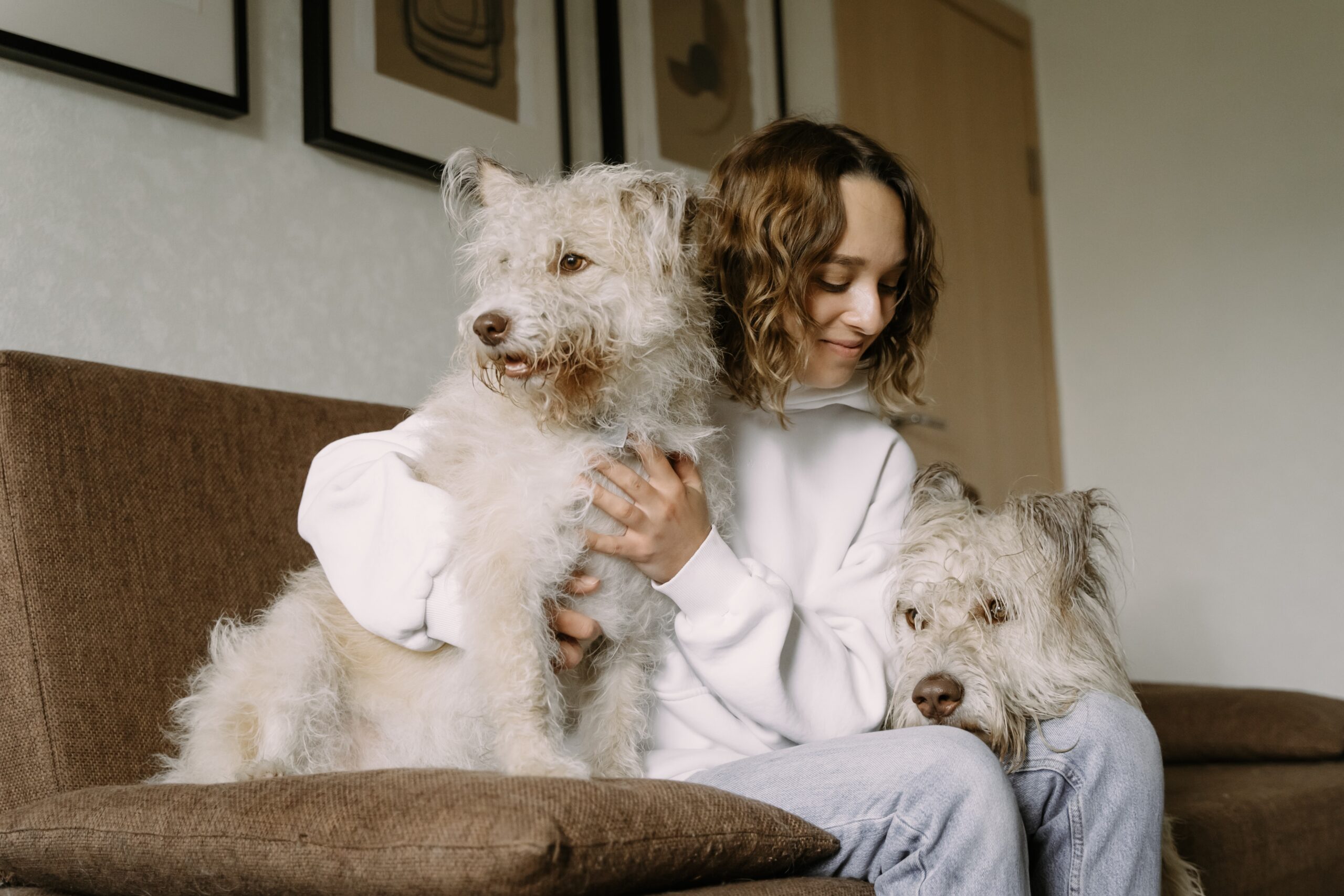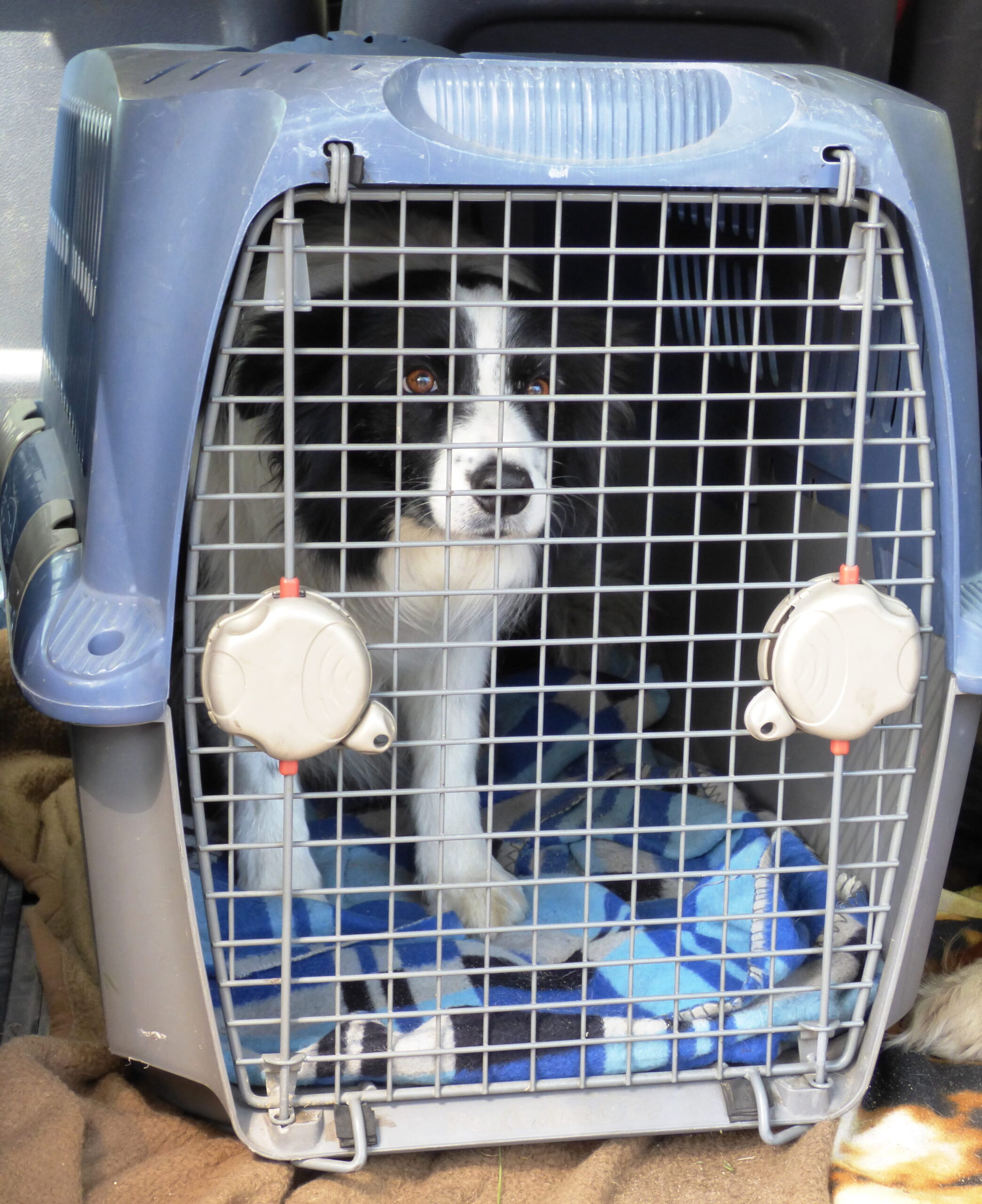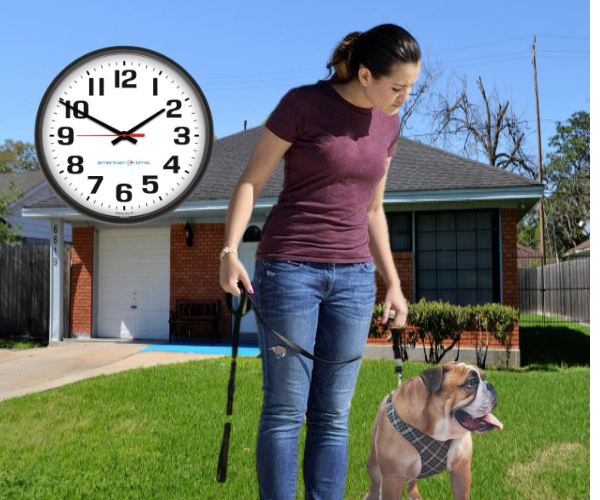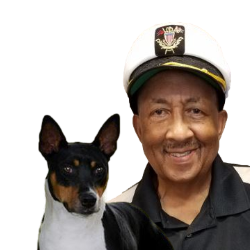How to train an older dog post contains affiliate links. Learn more on my Affiliate Disclosure page.
The key to successfully training an older dog is patience and consistency. Older dogs may have developed bad habits, making training complex, but they can learn new tricks with the right approach.
The first step in training an old dog is to establish a routine. Dogs thrive on routines because they like to know what you expect from them. Start by setting aside time each day for training sessions. Keep the sessions short and focus on one command at a time.
Are you a pet owner who has recently welcomed an adult dog into your home? Or do you have an older furry friend who needs to learn new tricks? Either way, these tips on how to train an older dog will come in handy!
It is essential to remember that older dogs may have physical limitations that restrict them from performing particular tasks. For example, considered problems or arthritis, avoid activities that put too much strain on their joints.
Train an Older Dog Takes
Patience and Dedication
Welcoming an adult dog into your home can be an exciting but nerve-wracking experience. It is essential to give your new furry friend time to adjust to their new surroundings.
It's normal for an adult dog to need a period of adjustment that can last anywhere from a few days to a month.

Remember that adult dogs come with a unique history, which can make them feel anxious or nervous at first. Stay encouraged if your new companion settles in right away.
Once your dog realizes they have found its forever home, it will soon become a beloved member of your family.
Training an adult shelter dog may present some challenges, but it also offers unique opportunities for bonding and growth.
You can train your older dog to learn new tricks and thrive in their new environment with patience and dedication.
House Train An Older Dog
House training your older dog can be a daunting task. Unlike puppies, adult dogs have already developed certain habits that may be difficult to break. Fortunately, you can still train your furry friend to do their business outside with patience and consistency.
Firstly, establish a routine for your dog. Take your pet out first thing in the morning and after meals or naps. It will help them learn when it is time to go potty.
Use positive reinforcement by offering treats and praise every time they go outside. Treats will encourage good behavior and help your dog associate going potty outside with pleasant experiences.
Secondly, until you get them fully trained, supervise your dog when indoors. You always keep them in sight or confined to a specific area where you can easily clean up accidents if they occur.
How To Crate Train An Older Dog
The good news is that adult dogs have more control over their bladders and bowels than young puppies. The house training usually goes much quicker with adult dogs than with puppies or adolescent dogs without this control.
Never assume your adult dog is house-trained or well-behaved inside the house. Keep your furry friend in a crate to avoid accidents when you can't supervise them.
Once you release them from the crate, lead them outside to the designated area to relieve themselves. If they don't do their business, don't fret! Re-crate them and try again later.
With patience and consistency, your older dog will soon become a well-trained companion.
It's essential to choose a crate that's both spacious and sturdy. Your furry friend should be able to stand up, move around, and stretch out quickly.
Dog Crate Equipment Tip
While soft-sided crates may seem cozy, they often won't hold up to the needs of an adult dog. Instead, opt for an easy to transported metal wire crate.
Remember, when inside the crate, provide your dog with water, comfy blankets, and chew toys.
Furthermore, giving your pet enough attention, exercise, and outdoor time is critical to keeping them happy and healthy.
Best Dog Crates For Small Dogs
Dog Crates For Medium Dogs
Dog Crates For Large Dogs
Remember, you should never use a crate as a form of punishment or isolate your dog for extended periods.

Be patient. Take it slow and steady! Start by tempting your furry friend with tasty treats to encourage them to enter the crate. But keep them in there for a short time at first - just a few minutes will do.
Train An Older Dog To Pee Outside
Training a dog to pee outside can be quite a task, especially if you've got an older dog. Thankfully, there is always time to teach an old dog some new tricks! Patience and persistence allow you to enjoy the outdoors with your furry friend without worrying about accidents.
First and foremost, establish a routine for your older dog. Dogs thrive on routines and schedules; consistency is vital in potty training. Take your pup outside at the exact times every day - first thing in the morning, after meals, before bedtime - until he gets used to doing his business out.
When taking your dog out for potty breaks, use a leash so that he won't get distracted by other things in the yard or neighborhood. Also, choose a spot in the yard where you want him to do his business and always take him there.
Teach Old Dog To Use Pee Pad
You can teach your furry friend to use a pee pad.
Firstly, choose the right pee pad for your pet. There are disposable pads made of paper or cloth that can be washed and reused. Choose one absorbent enough to contain urine without leaking onto your floor.
Secondly, pick a designated spot for the pee pad in your home where there is minimal traffic and away from feeding areas.
Once you've selected the location, show your dog where it is and encourage them to use it by saying "go potty" or any other command word.
Older Dog Not Using Pee Pad Anymore
As our furry friends age, it's common for their behavior to change, including their bathroom habits. If you've been relying on pee pads to avoid accidents in your home but suddenly find that your older dog is no longer using them, don't worry - you can still train them!
Firstly, it's essential to rule out any medical issues causing the sudden behavior change. Make an appointment with your vet to ensure no underlying health concerns need addressing. Once you've ruled out any health issues, start by reintroducing the pee pad and placing it where your dog used it regularly.
It's also helpful to establish a routine for your older dog, so they know when it's time to go outside or use the pee pad. Consistency is vital when training an older dog, as changes can cause confusion and anxiety for them.
Register For An Obedience Class
Did you know that your mature dog can still learn new tricks? Yup, even if they've never had any obedience training before!
Basic commands like walking on a loose leash and lying down can affect your furry friend's behavior. And the best place to work on this training?
An obedience class! Not only will your adult dog benefit from socializing with other pups and people, but you'll also get to observe how they react in a safe environment with a pro dog trainer ready to offer guidance.
Leash Training an Older Dog
Leash training an older dog can be challenging. Causes for leash pulling. An unpleasant emotional experience with leashes or set in their ways, making it hard to teach them new behaviors. However, you can prepare your older dog to walk calmly on a leash with patience and consistency.
The first step in leash training an older dog is to get them used to wearing a collar or harness and leash.
Start by hooking the leash onto the collar or harness for short periods around the house. It will help them get used to the leash, harness, and collar feeling and make them more comfortable when you take them outside.
Remember to praise your pup when they show positive behavior towards the leash.

Once your dog is relaxed wearing the collar and leash, you can teach them how to walk on a leash. Start by walking your dog around the house on a loose leash. It will help them get used to the feeling of the leash and help them understand that they need to follow you when you walk.
When you take your dog outside, keep the leash loose if your dog pulls on the leash. You stop walking and wait until the pulling ceases. Therefore, your pet gets the message that pulling on the leash will no longer work.
Teaching your older dog to walk on a loose leash is crucial for successful leash training. Use positive reinforcement. It will help your dog understand that walking on a loose leash is good behavior.
Finally, make sure to be consistent with your leash training. If you are inconsistent, your dog may become confused and not understand what exact behavior you are looking for.
You can train an older dog to walk on a leash with patience and consistency. Using the right approach, you can help your older dog learn to enjoy walks and become a well-behaved companion.
Next is teaching basic commands such as 'heel' and 'stop.
Correcting Old Problems
So, you've adopted an older dog and want to ensure they fit in with your household rules.
Your furry friend may have picked up some habits from their previous home that don't quite jive with yours - like jumping on visitors or lounging on the couch.
But don't worry! These tips will guide you in teaching your dog the right behaviors for your home.
- Don't hesitate to train your adult dog on your household's dos and don'ts rules!
- Train your older dog some self-control. You might try the "Nothing in Life Is Free" (NILF) method. With this technique, your furry friend must exhibit good behavior before receiving any treats, walks, or affection they crave.
- It's essential to ensure everyone in the household is on the same page. Your furry friend will need clarification if different people have different expectations or use other commands. To avoid this, agree on appropriate behaviors and use the same commands and rewards.
- The importance of training - According to the American Kennel Club, engage your senior dog with proper training
Your dog learns faster and retains its training for longer. So, get everyone involved and start training your furry companion today!
Train an Older Dog Keep It Positive
Training an older dog can be challenging, especially if you lack clarification on their experience. That's why positive reinforcement is the way to go!
You can effectively learn how to train an older dog of any age or breed by using yummy treats and lots of praise. Instead of punishing your furry friend, keep things light and enjoyable. This approach strengthens your bond and makes training a fun experience for you both.
K9 Training Institute Free Workshop
The K9 Training Institute offers a free workshop where you can learn firsthand their effective training methods.
The Free Workshop emphasizes building a solid bond between you and your pup. They explain how to apply positive reinforcement techniques that make learning enjoyable for dogs and their owners.
Does your dog tug on its leash, bark constantly, and won't come when called? Sign Up and get the FREE Obedience Training Workshop Now!


